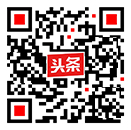[1] 卢春容,谭卫国,陆普选,等.2023年WHO全球结核病报告:全球与中国关键数据分析[J/CD].新发传染病电子杂志,2023,8(6):73-78.
[2] 李硕, 张云辉, 王永怡, 等. 2016年全球传染病热点回顾[J].传染病信息, 2017, 30(1):1-7.
[3] MANCUSO G,MIDIRI A,GERACE E,et al.Bacterial Antibiotic Resistance: The Most Critical Pathogens[J]. Pathogens 2021, 10(10):1310.
[4] ALBIN OR, HENIG O, PATEL TS, et al.Clinical Implications of Microbiologic Treatment Failure in the Setting of Clinical Cure of Bacterial Pneumonia[J]. Clin Infect Dis,2020,71(12):3033-3041.
[5] 樊亚楠, 于岩岩, 史楠, 等. 新型冠状病毒肺炎疫情下传染病学线上教学效果的问卷调查分析[J].中国高等医学教育, 2022, 12(4):56-57.
[6] 詹爱琴, 余丽君, 安轶, 等. 线上线下混合式教学模式在《传染病学》教学中的构建与应用效果研究[J]. 世界最新医学信息文摘, 2021, 21(49):361-362,364.
[7] 李勇刚. 幕课时代医学影像学教学的挑战与机遇[J/CD].新发传染病电子杂志,2017, 2(4):249-251.
[8] 嵘炅, 曾婷. 基于雨课堂的混合式教学在传染病学课堂教学中的应用初探[J].科技视界, 2019,17(11):209-210.
[9] 盛秋菊, 丁洋, 窦晓光, 等. 新冠疫情对高校传染病教学带来的挑战与发展机遇[J].中国中医药现代远程教育, 2021, 19(10): 180-182.
[10] 张文宏. 新型冠状病毒再发现与新发传染病防控的未来[J].中华传染病杂志,2020,38(1):3-5.
[11] 王静. 混合式教学在《传染病护理学》中的应用研究[J/CD].新教育时代电子杂志(教师版), 2021, 33:136-137.
[12] 刘琼,彭忠田,唐简,等. 基于慕课的混合式教学模式在传染病学教学中的应用价值[J].中国继续医学教育, 2022, 14(16):106-109.
[13] 丁婉怡, 张曼晶. 基于混合式教学模式的开放教育教学有效性研究[J].成人教育, 2020, 40(4):20-26.
[14] 姚闯. 传染病学线上教学应用与思考[J].现代交际, 2020, 24:165-167.
[15] 买力坎木, 朱庆峰, 左维泽, 等. 新冠肺炎疫情下基于钉钉平台的《传染病学》教学效果评价与经验总结[J].农垦医学, 2021, 43(3):267-270.
[16] 高丽娟, 张莹莹, 郑南. 当前传染病教学面临的问题与对策[J].中国医药导报, 2019, 16(36):174-177.
[17] 程娜, 卢杜丹, 向天新, 等. PBL教学法在传染病临床教学中的应用[J/CD]. 新发传染病电子杂志, 2017,2(1):60-61. |




